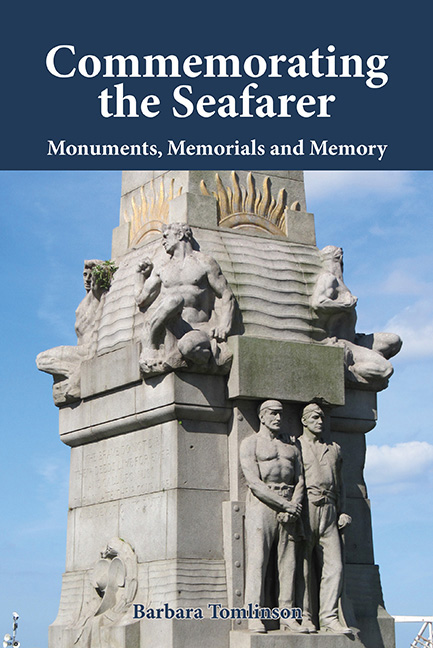Book contents
- Frontmatter
- Dedication
- Contents
- Illustrations
- Preface
- Acknowledgements
- Introduction
- 1 Shifting Loyalties: Naval Memorials, 1628–783
- 2 The Age of Heroes: Naval Memorials, 1783–815
- 3 Pax Britannica: Naval Memorials, 1815–914
- 4 Stormy Weather: Conflict and Sacrifice in the Twentieth Century
- 5 Commerce and Philanthropy: Mercantile Commemoration
- 6 Lost at Sea: Maritime Accidents
- 7 Maritime Explorers: Drake to Shackleton
- 8 Inshore: Fishermen, Lifesavers and Leisure
- Conclusion
- Bibliography
- Index
4 - Stormy Weather: Conflict and Sacrifice in the Twentieth Century
Published online by Cambridge University Press: 08 May 2021
- Frontmatter
- Dedication
- Contents
- Illustrations
- Preface
- Acknowledgements
- Introduction
- 1 Shifting Loyalties: Naval Memorials, 1628–783
- 2 The Age of Heroes: Naval Memorials, 1783–815
- 3 Pax Britannica: Naval Memorials, 1815–914
- 4 Stormy Weather: Conflict and Sacrifice in the Twentieth Century
- 5 Commerce and Philanthropy: Mercantile Commemoration
- 6 Lost at Sea: Maritime Accidents
- 7 Maritime Explorers: Drake to Shackleton
- 8 Inshore: Fishermen, Lifesavers and Leisure
- Conclusion
- Bibliography
- Index
Summary
The technical advances in place by the beginning of the twentieth century were to involve both the Navy and the merchant marine in conflict of unprecedented ferocity. After the carnage of the First World War, European war dead were commemorated with unprecedented reverence. In an increasingly democratic society, there was a groundswell of feeling that all life sacrificed in conflict should be commemorated. All casualties, not just officers, had been named on Boer War memorials. After the ‘Great War’, the nineteenth-century custom of listing them in order of rank gave way to tablets listing names in alphabetical order.
The majority of First World War conscripts had been drafted into the army, which was supplemented by two naval brigades officered by naval reservists. In spite of its smaller size, the historic importance of the Navy and its prominence in the previous ‘Great War’ of 1793–1815 were reflected in those civic war memorials whose design included figures representing different branches of the services. A figure from an earlier South African War memorial of this broad type stands on the south wall of the Old Library at Lichfield. It represents a sailor in field service order holding a Mark 1 Lee-Enfield rifle, with ‘HMS POWERFUL’ on his cap ribbon. Designed by George Frederick Bodley, the Ketton-stone figure was intended for a gothic war memorial at Duncombe Place, York, with eight figures representing all services. The sailor was rejected as overly aggressive and was replaced with an unarmed one who is nevertheless holding a length of rope with a chain and hook attached, probably to haul a heavy gun. A particularly splendid First World War memorial with just two sculpted servicemen was erected at Keighley in 1924 and has been recently refurbished (fig. 40). The general scheme is classically inspired: Victory, holding a laurel wreath and a palm branch, surmounts an obelisk flanked by realistic modern figures of a soldier and sailor. The rating raises a telescope to his eye rather than holding a weapon. The figures were praised by the Keighley News as ‘giving an impression of alertness and vigour, but without any hint of aggressive force’.
- Type
- Chapter
- Information
- Commemorating the SeafarerMonuments, Memorials and Memory, pp. 93 - 118Publisher: Boydell & BrewerPrint publication year: 2015



